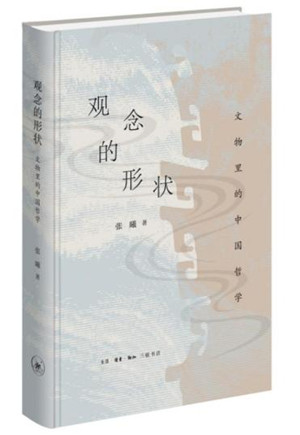Ancient Chinese philosophy in cultural relics
Author : WANG PEI Source : Chinese Social Sciences Today 2023-08-03

The Shape of Ideas: Chinese Philosophy in Cultural Relics
The Shape of Ideas: Chinese Philosophy in Cultural Relics, by Zhang Xi, a professor from the Department of Philosophy at Xiamen University, aims to sort out Chinese philosophy before the 16th century with the help of cultural relics.
The book follows a structured approach, organizing its content around classical themes of Chinese philosophy. The section titled “Ancestors and Us” specifically discusses the connotation of the will of heaven and filial piety. “Boundlessness and Eternity” focuses on the concept of the universe and empire. The theme of “Diversity and Unity” highlights the assimilation and integration of foreign civilizations into Chinese culture, from the Three Kingdoms period (220–265) to the end of the Tang Dynasty (618–907). The section “Mind and the World” reveals the heavenly principles and the confidence of Neo-Confucianism in the Song (960–1279) and Ming (1368–1644) dynasties.
The combination of bronze vessels used for sacrificial ceremonies in the Western Zhou Dynasty (c. 11th century–771 BCE) was changed to “food vessel style,” from the “wine vessel style” in the Shang Dynasty (c. 16th century–11th century BCE). The “destiny of heaven” understood by the Zhou people no longer meant to deceive and flatter ancestors, but became deeply bound to “virtue.” If a king of man wants to inherit the mandate of heaven, he must first be a king of virtue. Only when the king loves his subjects as his own children and governs according to public opinion, can “heaven” grant him its mandate. The ethicization of the relationship between “mortals, ancestors, and deities” came to constitute the foundation of the ritual and music system ever since the Western Zhou, and also played a central role in the transmission of political power.
The dazzling array of cultural relics from various places in public museums is a prominent embodiment of the inclusiveness of Chinese civilization. Throughout its history, Chinese civilization has integrated the wisdom of people from all ethnic groups, and has been continuously enriched through cultural exchanges with other countries.
This is illustrated by Mahayana Buddhism as well. From the perspective of philosophy, after Buddhism was introduced into China, it underwent a process of integration and adaptation with local Confucianism and Taoism, so as to seamlessly blend into the Chinese cultural context and gain widespread acceptance. This fusion gave rise to a unique Chinese Buddhist culture, that not only preserved the fundamental tenets of Buddhism but also incorporated Confucian ethical concepts and Taoist perspectives on nature. Throughout history, the propagation and development of Buddhism in China involved not only ethnic Han monks but also monks from various other ethnic groups. Their active involvement played a significant role in enriching the cultural essence and promoting the diversified evolution of Buddhism in China.
Wang Pei is from the School of Chinese at the University of Hong Kong.
Ye Shengtao made Chinese fairy tales from a wilderness
Ye Shengtao (1894–1988) created the first collection of fairy tales in the history of Chinese children’s literature...
-
How northern ethnicities integrated into Chinese nation
2023-09-18
-
Mogao caves
2023-09-12
-
Mogao Grottoes as ‘a place of pilgrimage’
2023-09-12
-
Time-honored architectural traditions in China
2023-08-29
-
Disentangling the civilizational evolution of China
2023-08-28
-
AI ethics in science fiction
2023-08-23














 2011-2013 by www.cssn.cn. All Rights Reserved
2011-2013 by www.cssn.cn. All Rights Reserved